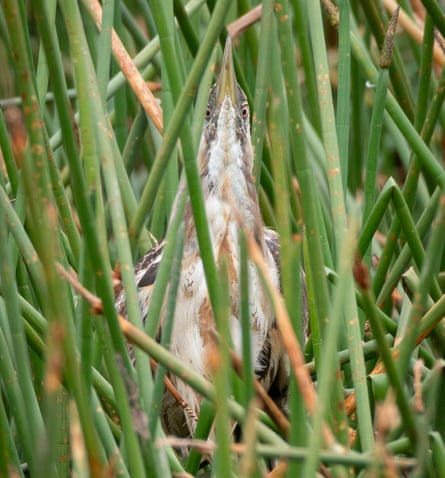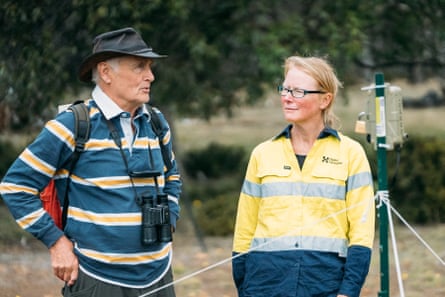For the first time in decades, the elusive call of the ‘bunyip bird’ returns to Tasmania’s Lagoon of Islands
The “bunyip bird” – named after a mythological river-lurking, human-eating monster – is as elusive as its namesake. Also known as the Australasian bittern, it is heard more often than it is seen.
It means that when bittern expert Geoff Shannon discovered the bird at Tasmania’s recently restored Lagoon of Islands – the first time it had been seen there in 40 years – it was a “very special moment”.
Hearing the distinctive call of the bittern “proved they were here … and trying to breed”, Shannon says.
The bittern is listed as endangered under the federal Environmental Protection and Biodiversity Conservation Act, but is not acknowledged as threatened under Tasmanian legislation.

Shannon says it used to be a common species, but its numbers had fallen dramatically over recent decades, due to drought and the drainage of marshlands for agricultural use.
Estimates suggest they number around 100 in Tasmania, he says, and about 1,000 on mainland Australia where they are often found in rice paddies. But he adds that it is difficult to know their exact numbers.
Bitterns are also hard to spot: they are well camouflaged, fly only occasionally and are most active at night.
-
Sign up for a weekly email featuring our best reads
“The bittern fascinates a lot of people because it is so secretive,” Shannon says. “It’s a big bird that you don’t see, and that makes it special.
“You’ve got to know what you’re looking for and be prepared for it. Their heads don’t stay above the reeds for very long.
“We need to know where they are and make sure that their habitats are not being destroyed.”
Bitterns are known for their calls, said to mimic the boom of the bunyip, a creature from Aboriginal mythology. People also liken the deep, low-pitched call to that used by deer, Shannon says.
“It’s an unusual call … you get three over a period of 30 to 60 seconds, and then there may be a 10 to 15 minute gap before you hear it again,” he says. “So you’ve got to be focused and know what you’re listening for.”
Elizabeth Znidersic, an ecologist at Charles Sturt University, says the return of the bittern’s call was a sign that the lagoon had been successfully restored after previously being dammed by Hydro Tasmania.
“Sound is a very critical part of a healthy ecosystem,” she says. “If you don’t hear insects, if you don’t hear frogs, if you don’t hear birds … there’s something very wrong.”
She says more work is needed to help the bittern recover.
The species is threatened by invasive species, including foxes and cats, and global heating, which contributes to prolonged drought and wet periods that can endanger their habitat.

Bec Sheldon, a Hydro Tasmania hydrologist who helped restore the Lagoon of Islands, says the return of the bittern shows the site is “fully restored”. She says she and colleagues had attempted to reinstate the natural water system at the lagoon since 2013, when the dam was decommissioned.
In the years since, the lagoon has “largely done its own thing”, she says, and the site was declared fully restored in 2021.
“Often if you can restore natural hydrology, [wildlife] will spontaneously start returning,” Sheldon says.
Source: theguardian.com



